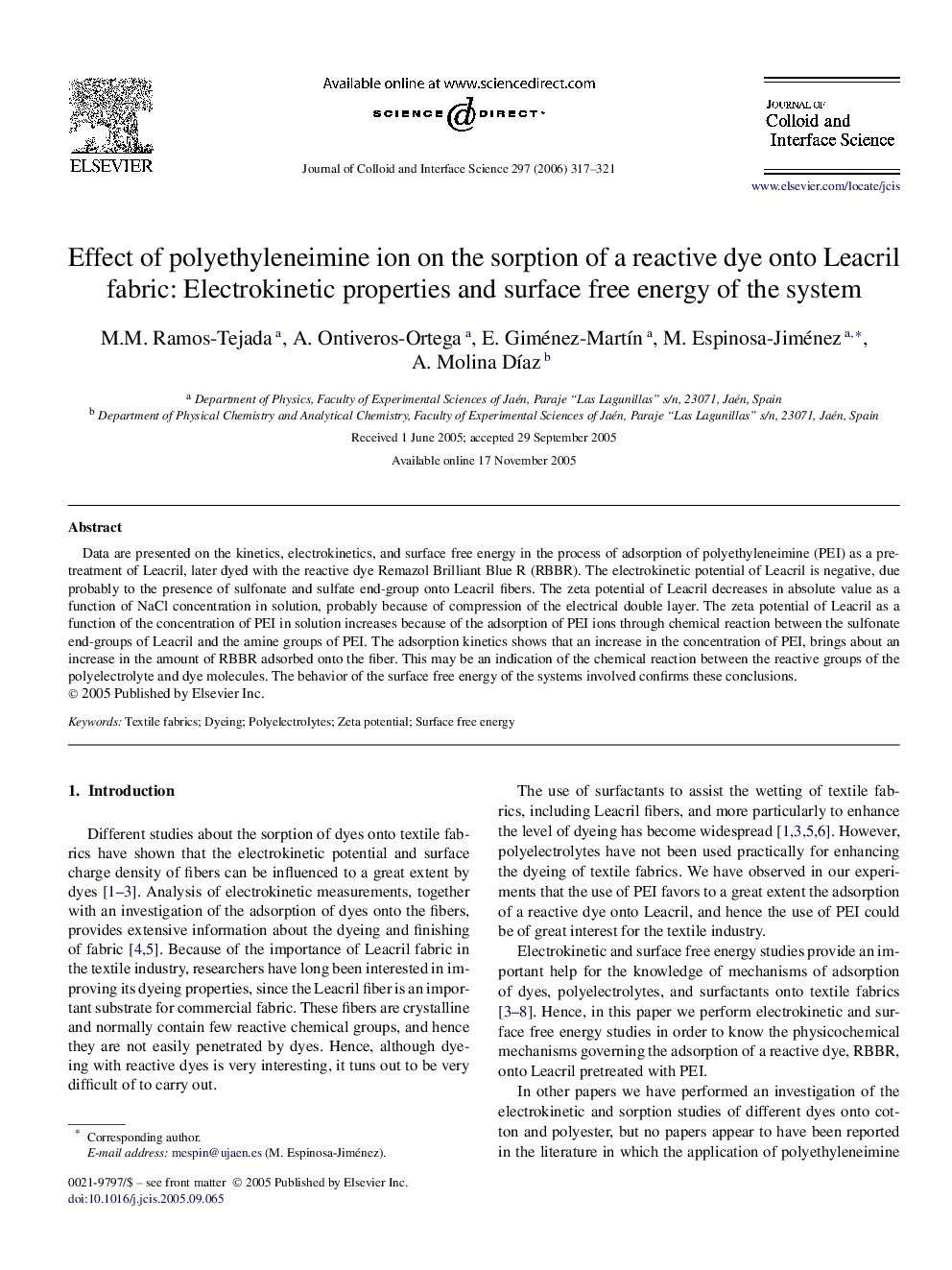| Article ID | Journal | Published Year | Pages | File Type |
|---|---|---|---|---|
| 613366 | Journal of Colloid and Interface Science | 2006 | 5 Pages |
Data are presented on the kinetics, electrokinetics, and surface free energy in the process of adsorption of polyethyleneimine (PEI) as a pretreatment of Leacril, later dyed with the reactive dye Remazol Brilliant Blue R (RBBR). The electrokinetic potential of Leacril is negative, due probably to the presence of sulfonate and sulfate end-group onto Leacril fibers. The zeta potential of Leacril decreases in absolute value as a function of NaCl concentration in solution, probably because of compression of the electrical double layer. The zeta potential of Leacril as a function of the concentration of PEI in solution increases because of the adsorption of PEI ions through chemical reaction between the sulfonate end-groups of Leacril and the amine groups of PEI. The adsorption kinetics shows that an increase in the concentration of PEI, brings about an increase in the amount of RBBR adsorbed onto the fiber. This may be an indication of the chemical reaction between the reactive groups of the polyelectrolyte and dye molecules. The behavior of the surface free energy of the systems involved confirms these conclusions.
Graphical abstractFigure optionsDownload full-size imageDownload as PowerPoint slide
